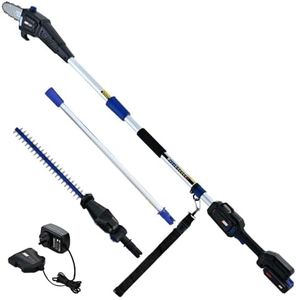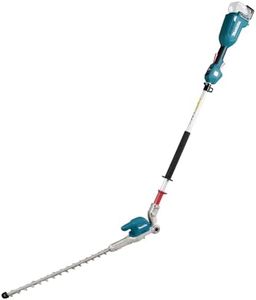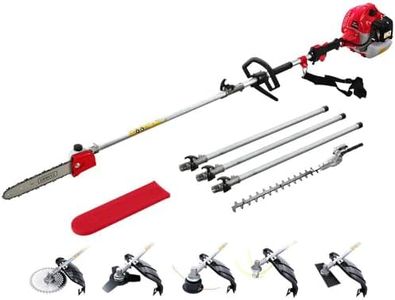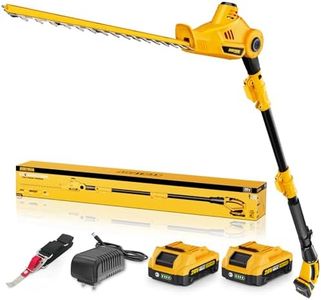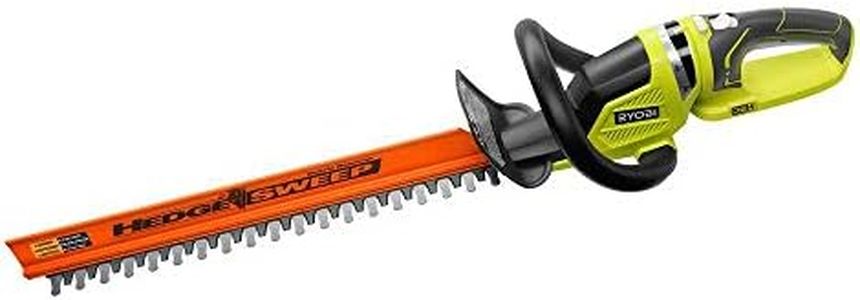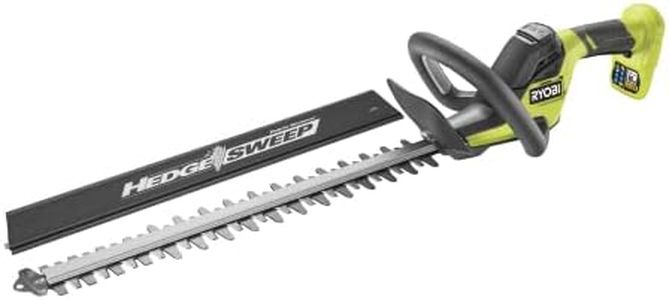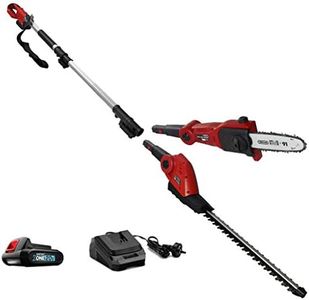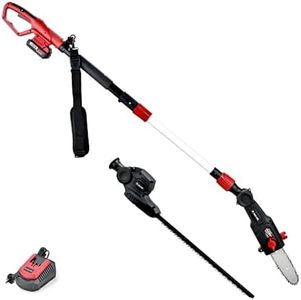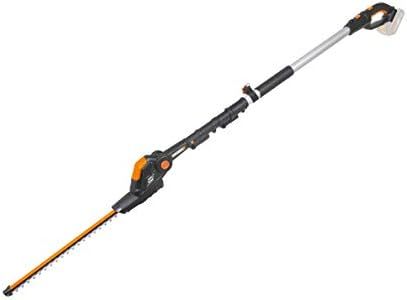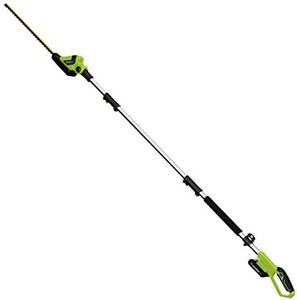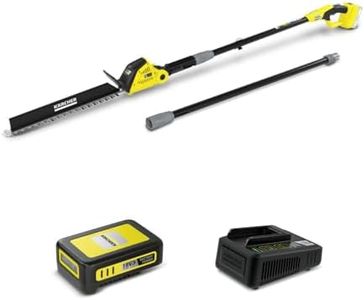We Use CookiesWe use cookies to enhance the security, performance,
functionality and for analytical and promotional activities. By continuing to browse this site you
are agreeing to our privacy policy
10 Best Pole Hedge Trimmers
From leading brands and best sellers available on the web.By clicking on a link to a third party's website, log data is shared with that third party.
Buying Guide for the Best Pole Hedge Trimmers
When choosing a pole hedge trimmer, it's important to think about the type of hedges you have, how tall or dense they are, and how comfortable the tool is for you to use. Pole hedge trimmers make it easier and safer to reach tall hedges without the need for ladders, but you want to be sure you pick a model that matches your yard's needs and your own physical comfort. Paying attention to the specifications will help you find a trimmer that feels right in your hands and gets the job done efficiently.Pole Length/ReachPole length, or maximum reach, tells you how high you can trim without a ladder. Shorter poles, around 6 to 8 feet, are good for lower shrubs and hedges, making them easier to handle and control. Medium poles, about 8 to 10 feet, suit typical garden hedges and give you flexibility for both low and medium-height work. Longer poles, 10 feet and above, let you tackle tall or wide hedges, but they can be harder to manage and heavier. To pick the right one, think about the tallest hedge you have and whether you want to occasionally reach higher areas or regularly trim at full extension.
Blade LengthBlade length affects how much area you can cut in a single pass. Shorter blades, under 16 inches, offer better maneuverability in tight spots and for shaping smaller hedges. Medium blades, between 16 and 22 inches, are versatile for most home hedges, giving a balance between precision and coverage. Longer blades, over 22 inches, make quick work of big, flat, or overgrown hedges, but can be heavier and less precise. Choose a blade length based on your typical hedge width, the shapes you want to maintain, and whether detail work or speedy trimming is more important for you.
Power SourcePole hedge trimmers can be powered by gas, electricity (corded), or battery (cordless). Gas trimmers are strong and run for long periods, suitable for large, tough jobs, but they're heavier, noisier, and require more maintenance. Corded electric trimmers are lighter and run as long as they're plugged in, but your movement depends on cord length and access to outlets. Battery-powered (cordless) trimmers are the easiest to maneuver and quieter, though run time is limited by the battery. To choose, consider the size of your yard and hedges, how close you are to power outlets, and whether you value easy maintenance or long runtimes.
WeightWeight matters because you'll be holding the trimmer at shoulder height or above, often for long periods. Lighter models (under 8 pounds) are easier to use for extended times and better for users who want to reduce arm fatigue. Medium weight models (8 to 12 pounds) offer more power but may be tiring if used for long sessions. Heavier models (over 12 pounds) are usually reserved for the most powerful types and for experienced users. Think about how strong you feel, whether you need to work overhead a lot, and how long your trimming sessions tend to last.
Head AdjustabilityHead adjustability refers to the ability of the trimmer's cutting blade to pivot or angle to reach the tops and sides of hedges. Some heads are fixed, so you're limited to straightforward cuts, while others have several locking positions or even fully rotating heads for trimming at odd angles and overhead. If you have shaped or sharply angled hedges, or just want more control with less awkward arm positioning, a more adjustable head is helpful. For mostly flat or simple hedge lines, a fixed head may be sufficient.
